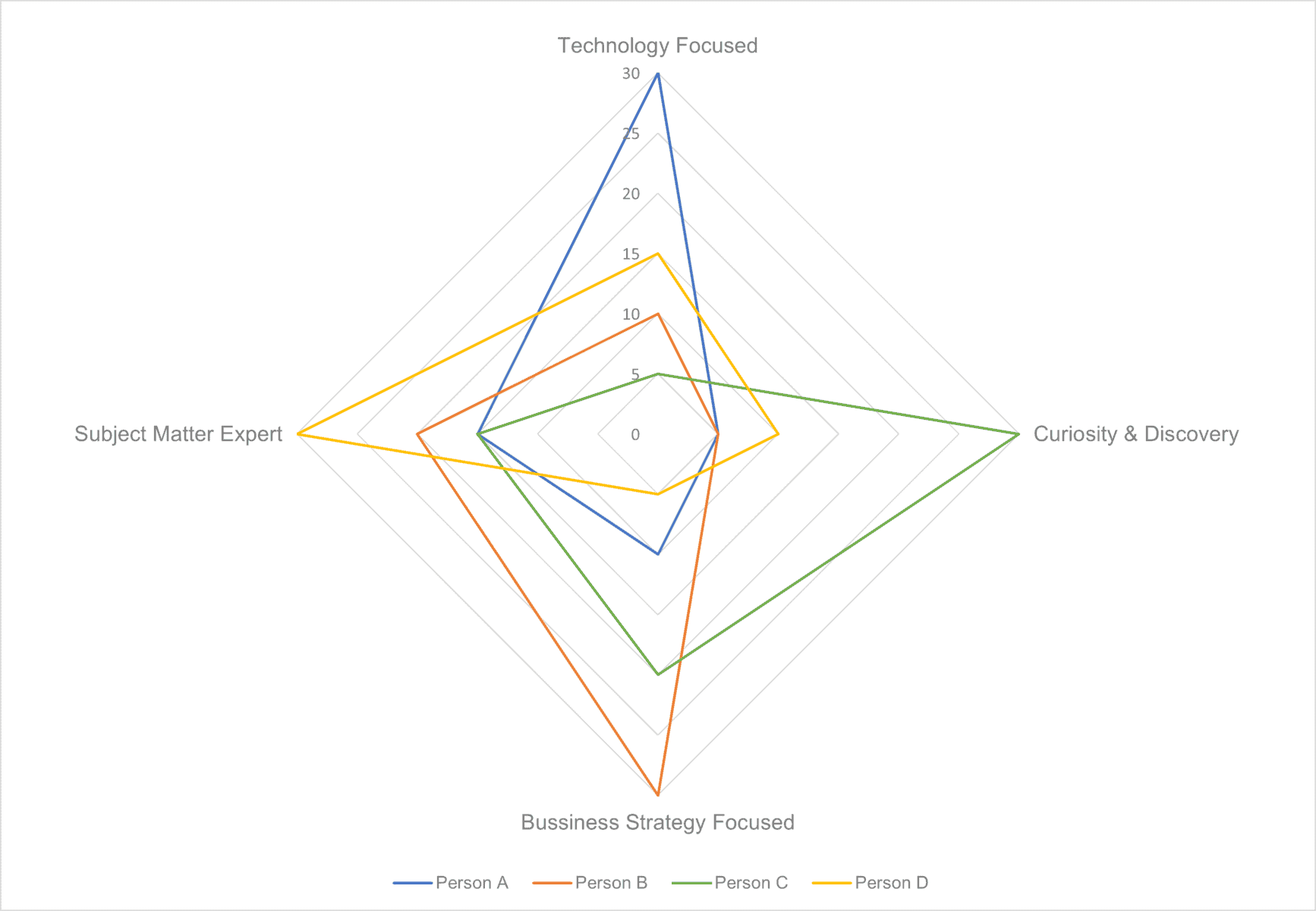For most tech companies, there comes a time when it’s necessary to seek outside investment. During the initial due diligence period and in any subsequent partnership, investors evaluate the leadership team as much as they evaluate the business.
Evaluating a product management leader and determining whether the right person is in the seat may not come easily. The Head of our Product Practice, Heidi Ram, recently sat down with John Stetic for his insights about how investors should evaluate product leaders.
John Stetic is a product leader and investor – his career includes:
- Venture Partner at Companyon Ventures
- Leading Product, Engineering & Design at Oracle Marketing Cloud, following the acquisition of Eloqua
- Co-Founding a successful startup and leading product through an acquisition
- Four exits (all acquisitions) as well as leading the acquisition of multiple companies
- Raising one of the largest Series B rounds in the Edtech category
- Board seats on multiple startups
Here are John’s insights into how a VC should evaluate a product management leader:
Part 1: The Product Leader Radar
There are a number of ways to evaluate a product leader, but it begins with the stage of business. For example, consider whether the company is seed funded or has already raised a Series A, B, or even further rounds. It’s also necessary to consider the organizational size and structure.
A straightforward way to assess product leaders is to think along four different axes and assess their strengths in each of these areas.
Technical & Business Strategy
Determine the relationship between the leader’s ability to focus on strategy vs. technology:
- How strong are their business acumen and ability to create a business-focused strategy?
- How well do they understand the technology and what opportunities it can unlock?
Source of Knowledge
The other axis is focused on the knowledge component:
- How strong is their domain knowledge? And does it come from them living the life of a user in the past?
- How strong are they at discovering and uncovering customer problems?

The illustration above provides a framework for consistently evaluating product leaders across an investor’s portfolio of companies. It provides a degree of predictability into what will influence the leader’s decisions concerning both the product and the business.
Product Leaders don’t easily fit into one quadrant, rather they have a spectrum of skills in all directions. An early product leader who came from a technical background might have some weaknesses in business strategy and discovery, (though the really good ones are also strong in these areas too).
Whereas a business-focused product leader who is also coming from being a subject matter expert could have a blind spot in discovering future opportunities that exist in the market and a weakness in continually investing what’s needed to scale a product technically. It’s likely the existing product leader has some superstar qualities and is reasonably well-rounded, after all, they helped build the company to where it is today.
When assessing leaders, look for sharp points on the chart. A heavy weighting on one of these axes can point to potential challenges with how the leader can scale in the future.
Quick Note About Subject Matter Experts
You want leaders who know their users and are really knowledgeable about the problems that need solving. True subject matter expertise comes from typically having lived the life of a user in the past – having suffered the same pains and needs. This can lead to an ability to create a really great product to address those users’ needs.
However, over time, users’ needs and markets change, and the company needs to address market needs, not just the pain points of the one segment the leaders know intimately. If the leader does not also have strong discovery skills and is not able to listen to users and understand market shifts, they will miss future opportunities.
Part 2: The Stages of Product Management Leadership
Early Stage Product Leaders
At earlier-stage companies, the role of a Chief Product Officer often doesn’t yet exist. The product leader is often the Founder whose strengths are focused on the problem, solution discovery, and iteration. Other times, there is someone leading the product as a Head of Product, or the only PM. Sometimes, this has been an external hire or a scrappy ‘high potential’ employee who has grown with the company.
Whether the product leader is the Founder or a scrappy Head of Product, in an early-stage company, the product leader needs to be focused on working in the solution space and experimenting until they find product-market fit. Once product-market fit has been realized, then it becomes about scaling and growth within defined product and market boundaries.
Scaling Product Leaders
As a startup gains momentum from finding product-market fit, the time comes to look for new growth opportunities. This new focus and its added complexity often result in new problems for the product management leader.
At this stage of the business, investors expect the product leader to spread their time across optimizing current offerings, seeking out and evaluating new opportunities, and developing the longer-term strategy to enable scaling up — while also spending time with teams helping them better execute.
The questions the product leader needs to always be asking are:
- What is the problem we’re solving? And does the whole organization understand our strategy?
- What are the subsequent problems we could solve in the market?
- How big are those problems?
- Should we actually solve them? Do they align with our strategy?
At this stage, an investor should evaluate the product leader’s ability to balance working at the strategic level with a longer time horizon, while being able to stay engaged in the execution, but not getting consumed by it.
Is the leader empowering their team?
Is the leader beginning the process of letting go?
Product Organization Builder
As an organization grows, the product leader needs to mature to have a holistic view of the business.
This product leader will now need to think about:
- How do the product choices we make affect other parts of the business such as marketing, sales, and customer success? Are all of these groups executing from a shared strategy?
- How do product choices affect the overall P&L?
- Are we allocating the right level of investment to different functional areas and to different time horizons?
While these are questions that were undoubtedly contemplated in the earlier stages, the answers were more obvious. There was a clear line of sight to the problem that needed to be solved and it was a race to deliver the best solutions that had the highest customer impact. But as an organization grows, the future investments become less obvious. User feedback, critical needs for large customers, overhauling existing features, expanding to new segments, and new products all demand resourcing.
How well a product leader is able to collaborate with other leaders and set a clear strategy to focus on finite resources is critical to future success. At scale the possibilities of what the company could do becomes large, so product leaders need to align the organization on both what to do, and equally important, what not to do. At this stage, a product leader also begins to meaningfully scale out the product organization.
In the evaluation of the product leader, an investor needs to include how equipped the leader is to build that organization.
How will they think about organizing the product team?
What are the career phases people need to go through?
How do they provide growth opportunities for high performers?
Where are there weaknesses in the team? What is the plan to close those gaps?
How do you measure the performance of a Product Manager?
This introduces a human capital element to a leader’s role. For earlier-stage product leaders, this can be a part of the job some people don’t enjoy. Many product leaders would rather build products and think about solving problems than think about building out an organization.
This is where early product leaders need to reflect on what really motivates them. If running a large team is not a motivator, they need to play to their strengths and take a role that will keep them closer to the product and look at bringing in a new product leader who can lead at scale.
Another key skill an effective product leader must have is the ability to communicate a vision and strategy clearly.
Can they “story tell”?
Are they able to communicate a simplified message?
Leading an organization at scale is a very different experience than when teams were small in the earlier days of a startup. Product leaders can underestimate the time and effort needed to keep a growing organization aligned. In the early days, information flows quickly, everyone is in the loop and naturally understands the context for decisions – everyone has a line of sight to most things. The quick context-heavy flow of information naturally declines over time and the product leader plays a key role in keeping the organization informed and aligned.
Scaled product leaders need to be great evangelists and storytellers, painting a clear picture of the future the organization is trying to create. They need to be able to communicate big ideas and decisions quickly and succinctly, understanding the needs of different internal audiences from individual product squads all the way to the Board.
Some early-stage product leaders who have lived in the details have trouble making the transition to a high-level communicator who’s able to deliver a clear, memorable message. This challenge is only compounded by needing to work through teams and be able to synthesize team-level details in a broader narrative.
Product Leader Assessment Summary
Assessing a product management leader and their ability to flourish within a company comes down to the following:
1. Where do you think this PM scores on the Product Leader Radar?
- Where do they get their knowledge from? Is it domain knowledge or discovery and design knowledge?
- Where do they sit on the strategy spectrum? How good are they at technical strategy? And how good are they at crafting a business strategy?
2. Their abilities and their preferences relative to the current business stage/needs:
- Are they focused on investigating, figuring out, and latching onto one problem and solving it?
- Are they finding more problems to solve and being able to scale the organization’s ability to solve those problems?
- Do they work in a cohesive and aligned way that builds processes and a strategy – a strategy that touches everyone in the whole organization?
- Are they excited to invest in developing their team and building out the needed operational processes?
- Can they communicate at scale; keeping the whole organization informed and aligned?
While there is no silver bullet to evaluating a product leader, applying these two principles allow an investor to really break down and evaluate a product leader’s strength, weakness and preferences in a more tangible way.
